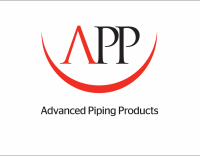
How costly is corrosion? The economic impact of corrosion is far greater than most people realise; according to this report published by NACE the cost of corrosion in the US alone is $276bn a year – that’s more than 3% of the nation’s GDP!
Of this, about $121bn was spent to control corrosion, leaving the difference of $155bn as the net loss to the economy. The total annual direct cost of corrosion for production and manufacturing is estimated to be $17.6bn.
The point where pipe intersects support steel has proven to be one of the most common locations for major corrosion problems. One solution, though costly, is coating the pipe with a protective barrier. In order to apply this coating, the pipe is cleaned, resurfaced and then coated. The costs / risks associated include labour, machinery and the potential of a line shut-down.
While these expensive and time-consuming coatings can help reduce some of the factors that lead to corrosion, they are ultimately rendered ineffective when steel pipe is placed directly on an I-beam. Expansion, contraction and vibration cause the pipe to move and the resulting abrasion compromises the corrosion barrier over time. Once the coating is worn away, bare metal, moisture from condensation, electrical charge and oxygen are all working in tandem to create the perfect corrosion cell.
Measuring up
As discussed, pipes are subjected to movement due to changes in temperature, load or other operating variables. In order to prove the effectiveness of composites in these situations, we’ve performed frictional abrasion wear tests, among others, on our ProTek Composite Wear Pads and AeroTek Cradle.
These tests have conclusively shown that our composite wear pads are unaffected by the movement experienced during operation and thus protect your pipe from this movement, as well.
Testing procedure
Simulating frictional abrasion to measure wear over 20 years Simulating frictional abrasion to measure wear over 20 years.
This apparatus was sitting on an I-beam with an 8in-wide flange. A load of 3,000lb was applied to the wear pad / cradle. The test apparatus was moved longitudinally across the I-beam (4in in each direction). This was to simulate thermal cycling over 20 years of operation, with a safety factor of 4.
Abrasion wear test results
Light dusting to face of wear pad/cradle Light dusting occurred after 150 cycles or 20 years
Conclusions
With a composite wear pad or cradle between your pipe and an I-beam, the costs of corrosion damage and repair are completely mitigated for more than 20 years!
An ounce of prevention
This oft-quoted saying certainly applies to preventing and protecting piping systems from the detrimental effects of corrosion. Compared to the costs of repairs after corrosion gains a foothold, the price of protective composite wear pads and pipe shoes is minimal and easily justified.
Find out how our highly engineered composite pipe support solutions prolong the life of your valuable piping system and help save you time and money!

